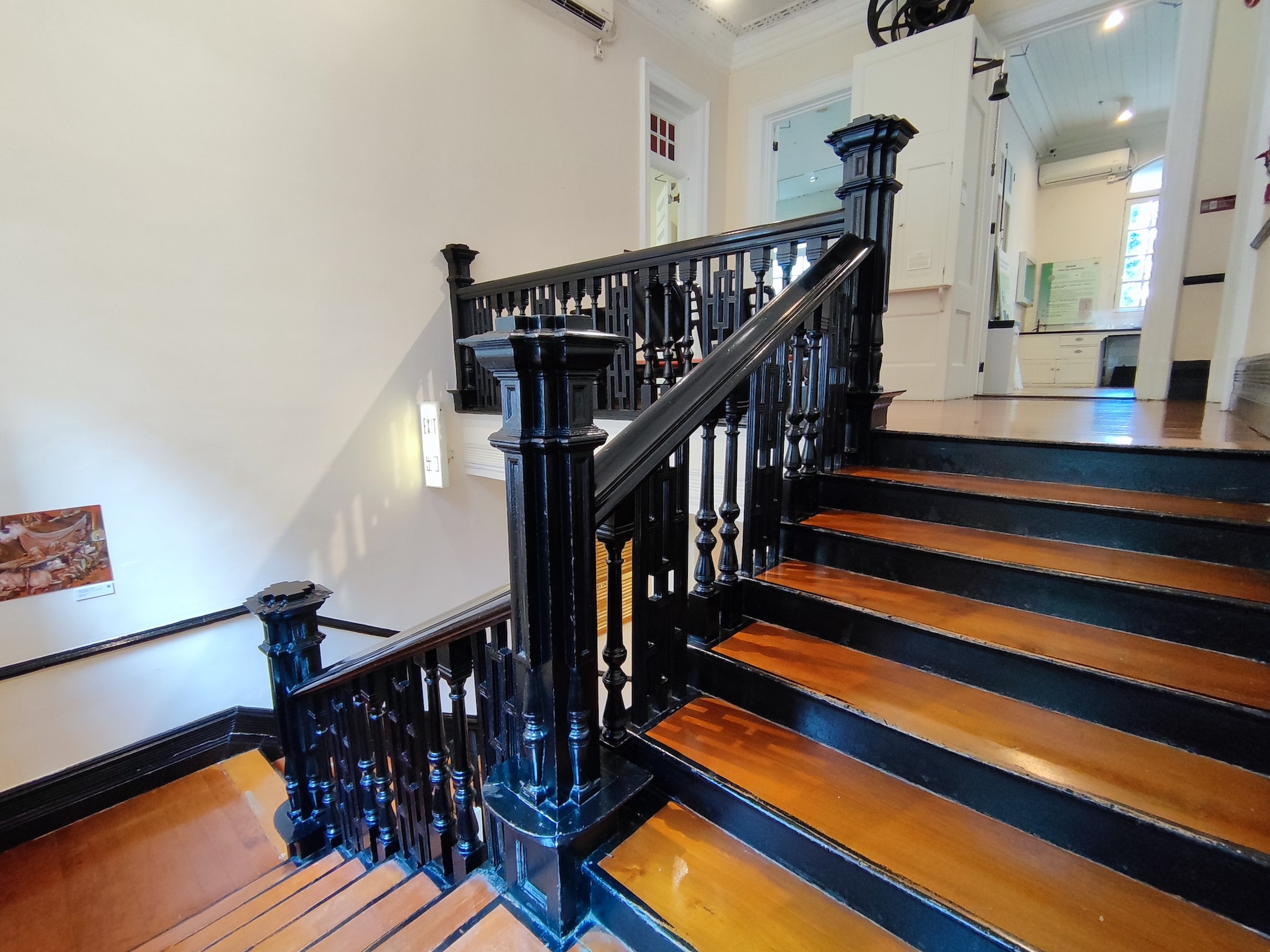Last Updated on December 6, 2023
Before anything else, familiarize yourself with local building codes and safety regulations. Ensure that the stair railing design and installation meet these standards. This includes height requirements, spacing between balusters, and load-bearing capabilities. Prioritizing safety is crucial for both residential and commercial spaces.
The design of the stair railing should complement the overall style of your home. Whether you prefer a classic, contemporary, or eclectic look, various design options are available. Pay attention to details like baluster styles, handrail profiles, and the overall visual impact. Customization allows you to tailor the design to suit your preferences. A well-designed stair handrail can transform the overall look of your home, adding both functionality and aesthetic appeal.

Whether renovating or building from scratch, choosing a suitable stair handrail is crucial for achieving a cohesive and visually pleasing interior. Stair handrails play a crucial role in accident prevention. They act as a barrier, helping prevent accidental falls and guiding individuals ascending or descending stairs. This is particularly important in homes with multiple levels or where stairs are prominent.
Ways to Enhance the Beauty of House
Stair handrails serve a dual purpose by providing essential safety and support while also contributing to the overall aesthetics and accessibility of a space. Beyond their functional role, stair handrails contribute significantly to the aesthetics of a staircase and the surrounding space.
Thoughtfully designed handrails can complement the overall interior design, acting as a visual focal point. Various materials, finishes, and design elements allow homeowners to express their style preferences. In this article, we’ll explore practical ways to improve the look of your home with the best stair handrail options available.
Choose Quality Materials
The first step in enhancing your home’s aesthetic with a stair handrail is selecting high-quality materials. Opt for durable and visually appealing options like wrought iron, stainless steel, wood, or glass. Each material brings its unique charm to the space. Wrought iron exudes a classic elegance; stainless steel offers a modern touch; wood brings warmth and traditional vibes, while glass provides a sleek and contemporary feel. Consider your home’s existing decor and style to determine which material complements it best.
Embrace Unique Designs
Stand out from the ordinary by choosing a stair handrail with a unique design. Explore patterns, curves, or geometric shapes that add character and visual interest to your staircase. Intricate wrought iron scrollwork, minimalist stainless steel lines, or a combination of materials can make a bold statement. Tailoring the design to suit your home’s overall theme ensures a harmonious blend of functionality and style.
Incorporate Lighting Elements
Integrating lighting elements into your stair handrail enhances safety and contributes to your home’s overall ambiance. Consider handrails with built-in LED strips, subtle recessed lighting, or strategically placed sconces. These additions illuminate the staircase and create a warm and inviting atmosphere. Lighting can be adjusted to suit different moods, providing versatility while enhancing the aesthetic appeal of your home.
Opt for Customization
To elevate your home’s aesthetic, opt for a customized stair handrail that caters to your specific preferences and the architectural nuances of your space. Work with a skilled craftsman or design professional to create a unique handrail that complements your interior design. Customization allows you to play with dimensions, materials, and finishes, ensuring seamless integration into your home while reflecting your style.
Pay Attention to Finishes
The finish of your stair handrail plays a significant role in determining its visual impact. Choose finishes that complement your home’s color palette and existing finishes. Whether it’s a matte black wrought iron, a glossy stainless steel, or a richly stained wooden handrail, the right finish enhances the overall cohesion of your interior design. Consistency in finishes across various elements, such as stair balusters and newel posts, creates a polished and cohesive look.
Harmonize with Surrounding Elements
Ensure your stair handrail harmonizes with the surrounding elements, including flooring, wall colors, and nearby furniture. A cohesive color scheme and design continuity create a unified and appealing aesthetic. For example, if your home features warm-toned hardwood floors, a wooden handrail with complementary tones would seamlessly integrate into the space. Consider the architectural style of your home as well, ensuring that the stair handrail enhances rather than clashes with the overall design.
Bottom Line
Well-designed handrails offer comfort and ergonomic benefits. The handrail’s height and shape should be conducive to a natural and secure grip, ensuring that users feel confident and supported while navigating the staircase. This consideration is vital for individuals of varying heights and abilities. Elevate both form and function, transforming your staircase into a focal point that enhances the overall aesthetic of your living space.




